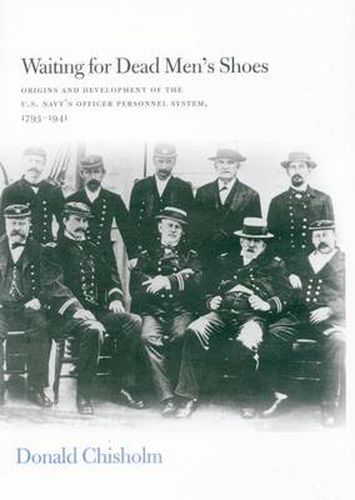Readings Newsletter
Become a Readings Member to make your shopping experience even easier.
Sign in or sign up for free!
You’re not far away from qualifying for FREE standard shipping within Australia
You’ve qualified for FREE standard shipping within Australia
The cart is loading…






This monumental study provides an innovative and powerful means for understanding institutions by applying problem solving theory to the creation and elaboration of formal organizational rules and procedures. Based on a meticulously researched historical analysis of the U.S. Navy s officer personnel system from its beginnings to 1941, the book is informed by developments in cognitive psychology, cognitive science, operations research, and management science. It also offers important insights into the development of the American administrative state, highlighting broader societal conflicts over equity, efficiency, and economy. Considering the Navy s personnel system as an institution, the book shows that changes in that system resulted from a long-term process of institutional design, in which formal rules and procedures are established and elaborated. Institutional design is here understood as a problem-solving process comprising day-to-day efforts of many decision makers to resolve the difficulties that block completion of their tasks. The officer personnel system is treated as a problem of organized complexity, with many components interacting in systematic, intricate ways, its structure usually imperfectly understood by the participants. Consequently, much problem solving entails decomposing the larger problem into smaller, more manageable components, closing open constraints, and balancing competing value premises.
$9.00 standard shipping within Australia
FREE standard shipping within Australia for orders over $100.00
Express & International shipping calculated at checkout
This monumental study provides an innovative and powerful means for understanding institutions by applying problem solving theory to the creation and elaboration of formal organizational rules and procedures. Based on a meticulously researched historical analysis of the U.S. Navy s officer personnel system from its beginnings to 1941, the book is informed by developments in cognitive psychology, cognitive science, operations research, and management science. It also offers important insights into the development of the American administrative state, highlighting broader societal conflicts over equity, efficiency, and economy. Considering the Navy s personnel system as an institution, the book shows that changes in that system resulted from a long-term process of institutional design, in which formal rules and procedures are established and elaborated. Institutional design is here understood as a problem-solving process comprising day-to-day efforts of many decision makers to resolve the difficulties that block completion of their tasks. The officer personnel system is treated as a problem of organized complexity, with many components interacting in systematic, intricate ways, its structure usually imperfectly understood by the participants. Consequently, much problem solving entails decomposing the larger problem into smaller, more manageable components, closing open constraints, and balancing competing value premises.